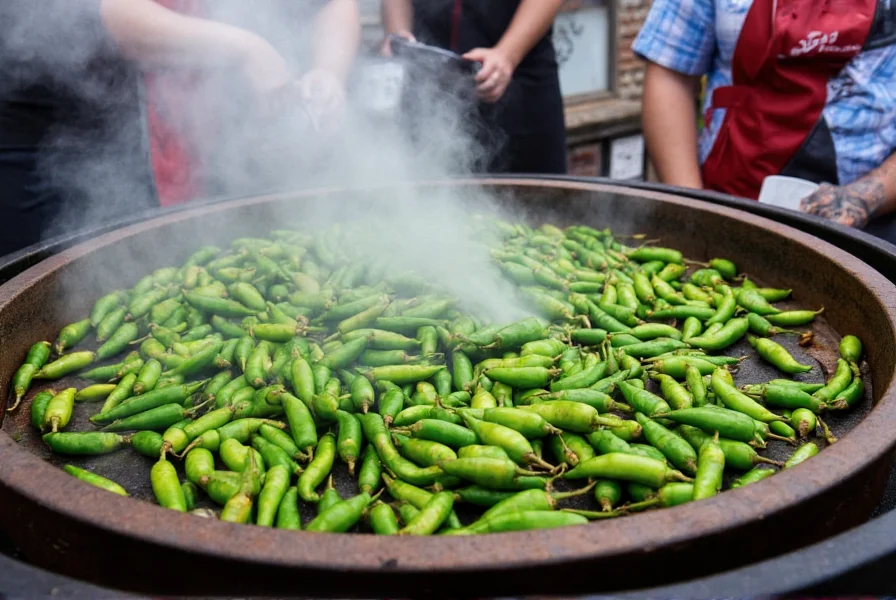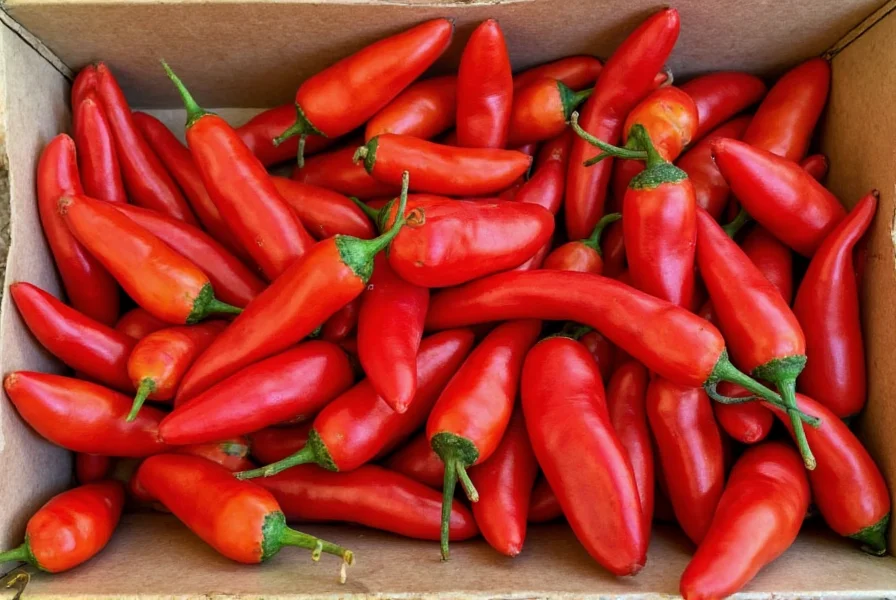Hatch chile peppers represent a culinary treasure from New Mexico's fertile Mesilla Valley, specifically around the town of Hatch. These seasonal peppers aren't a single variety but rather a collection of New Mexico-style chilies grown in the Hatch Valley's unique microclimate. The region's sandy soil, high altitude, and abundant sunshine create ideal growing conditions that produce chilies with complex flavor profiles unmatched by peppers grown elsewhere.
What makes Hatch chiles special isn't just their origin but their seasonal nature. True Hatch chile season runs from late July through September, when fresh peppers flood local markets. During this brief window, communities host festivals celebrating the harvest, and families line up for hours to roast fresh peppers. The roasting process—performed outdoors in rotating drums over mesquite wood—releases aromatic compounds that enhance their distinctive flavor.

Understanding Hatch Chile Varieties and Heat Levels
Hatch chiles come in multiple varieties that mature along a heat spectrum. The same plant can produce peppers ranging from mild to hot depending on growing conditions and harvest timing. Local farmers often label them by heat level rather than specific cultivar names.
| Heat Level | Scoville Units | Flavor Profile | Best Culinary Uses |
|---|---|---|---|
| Mild (5-10%) | 500-2,500 | Sweet, grassy, bell pepper-like | Stuffed peppers, sauces for children, scrambled eggs |
| Medium (most common) | 2,500-5,000 | Earthy, slightly smoky, balanced heat | Enchiladas, burgers, soups, cheese spreads |
| Hot (10-15%) | 5,000-8,000 | Sharp, pungent, with citrus notes | Salsas, hot sauces, meat marinades |
How Hatch Chiles Differ From Other Green Chilies
Many consumers confuse Hatch chiles with generic 'green chile' or New Mexico chiles. While all share botanical roots, authentic Hatch chile peppers carry a protected designation. The what are hatch green chile peppers question often stems from marketing confusion—supermarkets frequently label any New Mexico-style chile as 'Hatch' year-round, but true Hatch chiles are only harvested fresh during their short season.
The difference between hatch and jalapeno is significant. Jalapeños maintain consistent heat (2,500-8,000 Scoville) with a sharper, more immediate burn, while Hatch chiles offer more complex flavor with gradual heat. Unlike jalapeños that grow worldwide, authentic Hatch chiles reflect their terroir—similar to how Champagne must come from France's Champagne region.
Selecting and Storing Fresh Hatch Chiles
When choosing fresh Hatch chiles during peak season (August-September), look for firm, glossy peppers with deep green color and minimal blemishes. Heavier peppers typically contain more flesh. Avoid those with soft spots or wrinkled skin, which indicate age.
For short-term storage, keep fresh Hatch chiles in a paper bag in your refrigerator's crisper drawer for up to two weeks. For long-term preservation, roasting and freezing remains the preferred method among New Mexico chefs. After roasting and removing skins, freeze whole or diced peppers in airtight containers for up to one year. Never store fresh chiles in plastic bags—they need airflow to prevent moisture buildup.

Culinary Applications and Substitutions
Chefs prize Hatch chiles for their versatility in Southwestern cuisine. The best recipes with hatch chiles often feature them as the star ingredient rather than just a heat source. Traditional New Mexican dishes like stacked green chile cheeseburgers, Hatch chile mac 'n' cheese, and green chile stew showcase their flavor complexity.
When authentic Hatch chiles aren't in season, proper substitutions matter. During off-season months, seek these alternatives based on your recipe needs:
- For mild flavor: Anaheim peppers (though less complex)
- For medium heat: Early fall New Mexico chiles from other regions
- For hot applications: Jalapeños with a squeeze of lime to mimic citrus notes
Remember that canned or frozen 'Hatch' products often contain peppers from multiple growing regions. For authentic flavor, seek brands that specify 'New Mexico grown' and 'Hatch Valley' on packaging. The hatch chile pepper season determines freshness—frozen peppers packed immediately after harvest often taste better than 'fresh' off-season peppers shipped long distances.
Common Misconceptions About Hatch Chiles
Several myths persist about these celebrated peppers. First, not all New Mexico chiles are Hatch chiles—only those grown in the Hatch Valley region qualify. Second, the heat level doesn't correlate with pepper size; smaller peppers aren't necessarily hotter. Third, the claim that 'hatch chile vs new mexico chile' represents different species is inaccurate—they're regional variations of the same cultivar group.
Understanding how hot are hatch chile peppers requires recognizing their variability. Unlike standardized commercial peppers, Hatch chiles' heat depends on rainfall, soil conditions, and harvest timing. This natural variation contributes to their artisanal appeal but frustrates those seeking consistent heat. When cooking, always taste a small piece before adding to dishes.
Frequently Asked Questions
Where can I buy authentic Hatch chile peppers?
Authentic fresh Hatch chiles are available August-September at farmers' markets in New Mexico and through specialty online retailers that source directly from Hatch Valley growers. Look for 'Hatch, New Mexico' on packaging—supermarket claims of 'Hatch style' often indicate non-regional peppers. During off-season, properly labeled frozen or canned products from reputable New Mexico brands offer the closest alternative.
How do I properly roast Hatch chile peppers at home?
To roast Hatch chiles, place whole peppers directly over a gas flame, on a grill, or under a broiler, turning frequently until skins blister and blacken (about 10-15 minutes). Immediately transfer to a covered bowl or paper bag for 15 minutes to steam, which loosens the skins. Peel under running water, remove seeds and membranes if desired, then slice or dice for immediate use or freezing. Never use plastic bags for steaming—they create steam that makes peppers soggy.
Are Hatch chile peppers and poblano peppers the same?
No, Hatch chiles and poblanos differ significantly. Poblanos are a specific large, heart-shaped pepper (1,000-2,000 Scoville) typically dark green, while Hatch chiles refer to New Mexico-style peppers grown in Hatch Valley that range from mild to hot (500-8,000 Scoville). Poblanos maintain consistent size and shape, whereas Hatch chiles vary by cultivar. When dried, poblanos become ancho chiles, while Hatch varieties become New Mexico chiles.
Can I grow Hatch chile peppers outside New Mexico?
You can grow Hatch chile pepper seeds outside New Mexico, but the resulting peppers won't have the authentic Hatch flavor profile. The unique terroir of the Hatch Valley—including its specific soil composition, altitude, and climate—creates the distinctive taste. Gardeners elsewhere often report their plants produce peppers with different heat levels and flavor characteristics. For closest results, use seeds from reputable Hatch Valley suppliers and mimic growing conditions with well-drained soil and full sun exposure.











 浙公网安备
33010002000092号
浙公网安备
33010002000092号 浙B2-20120091-4
浙B2-20120091-4